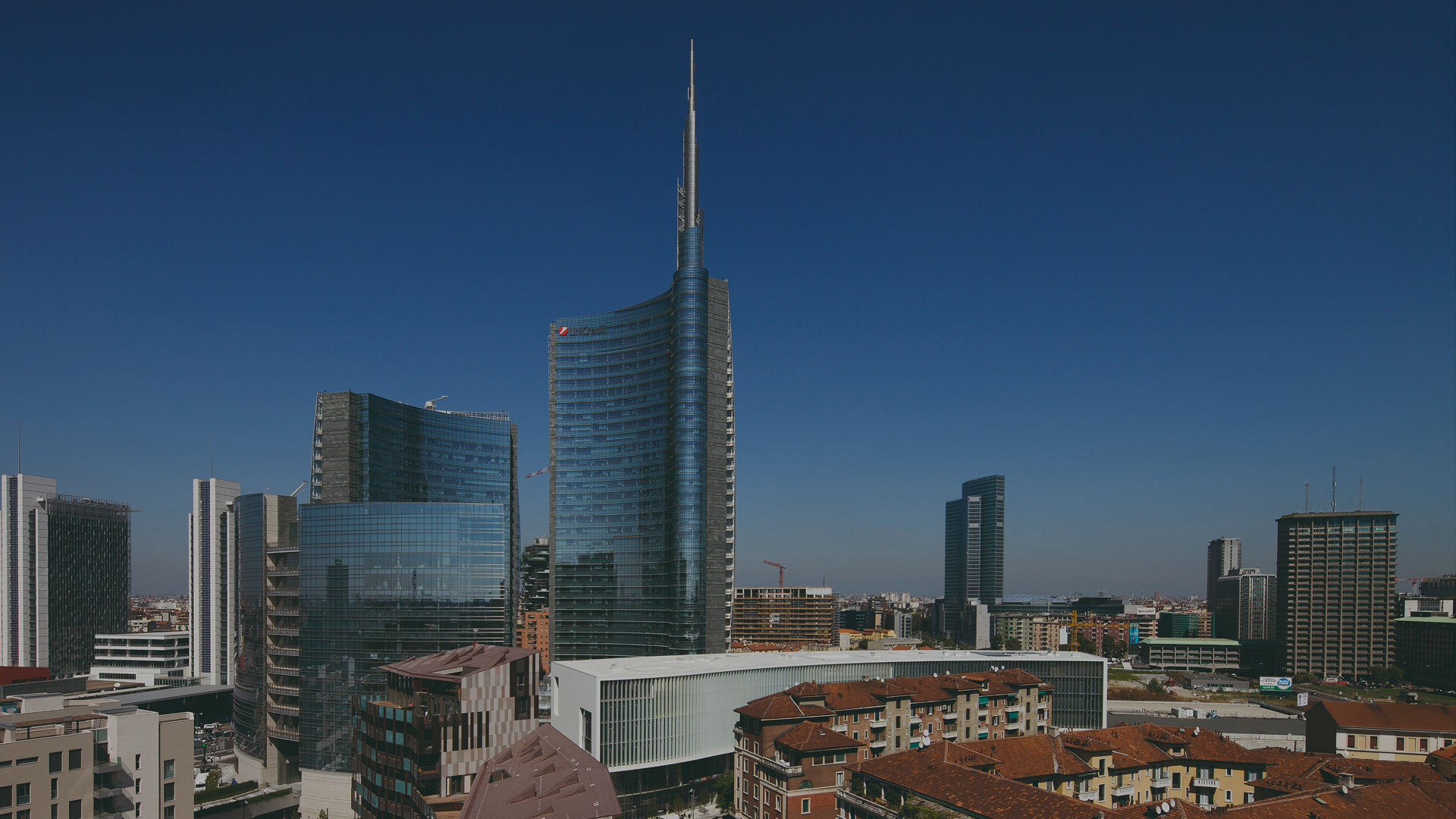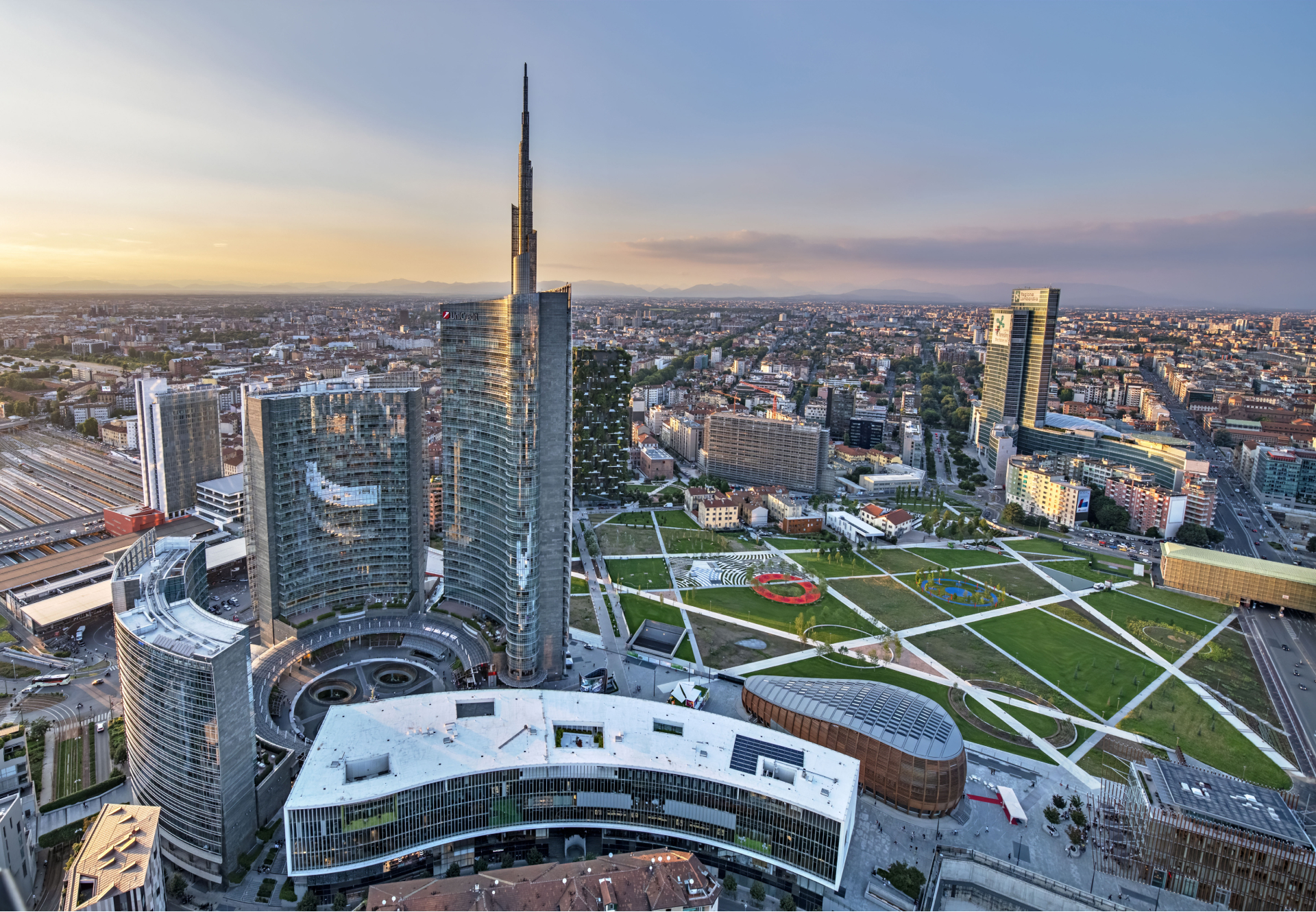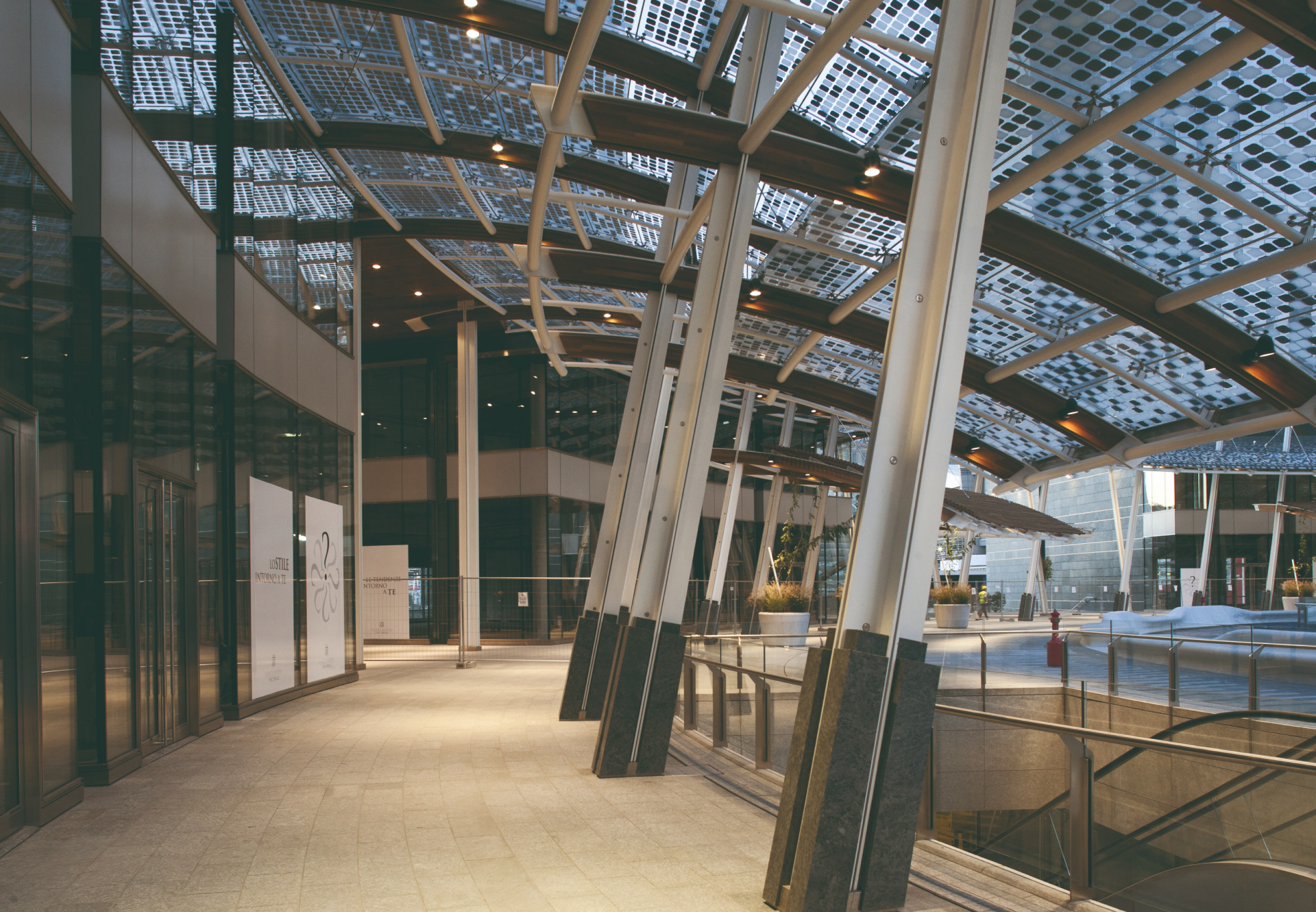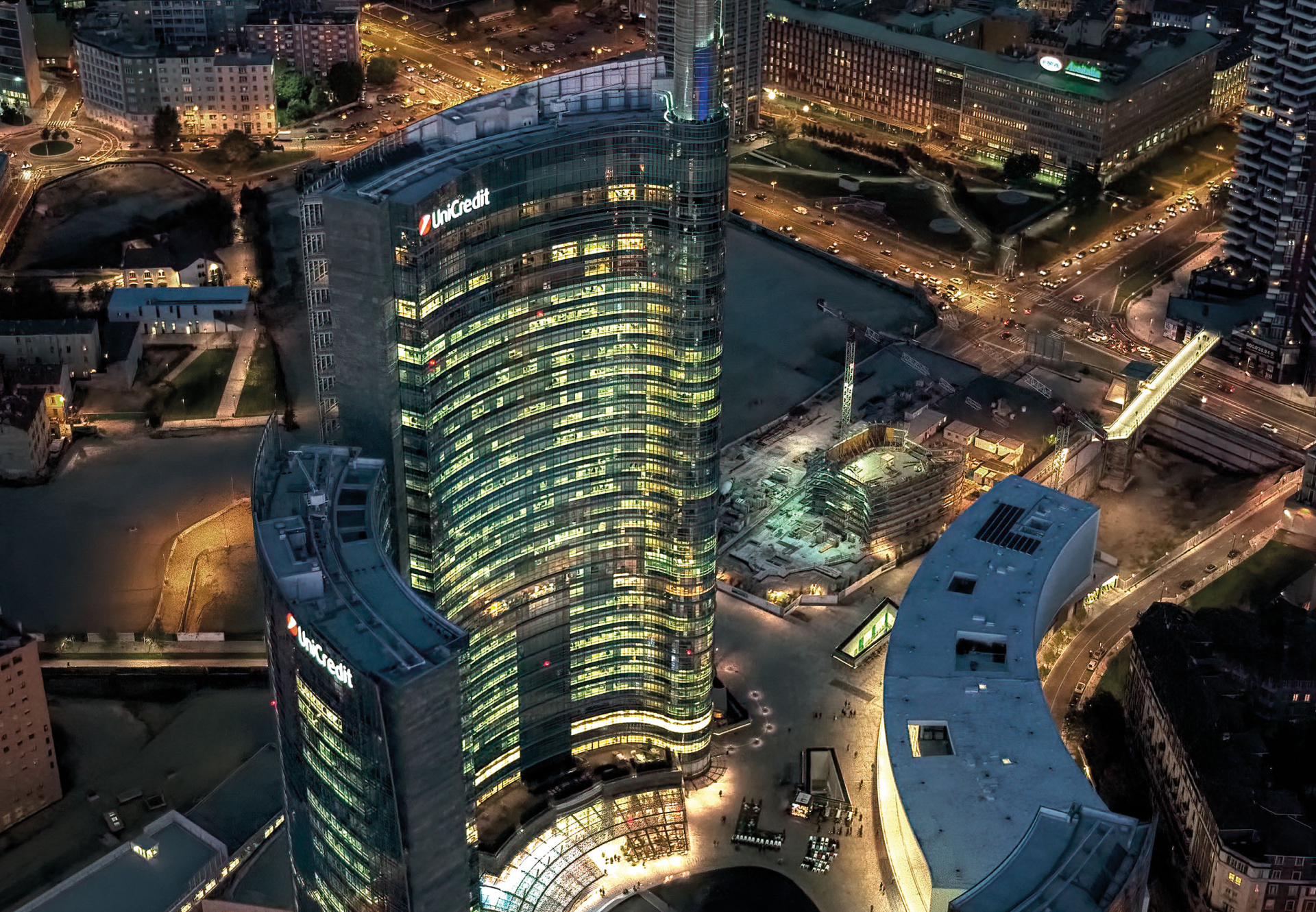
The urban redevelopment project of Porta Nuova Garibaldi represents one of the most significant transformations of Milan’s urban fabric. Developed in accordance with the master plan by Pelli Clarke Pelli Architects Associates (New York, USA), the complex consists of three semicircular towers of 32, 22, and 12 floors, alongside a five-story building (E1–E2) hosting commercial and office functions. The development also includes an elevated pedestrian plaza featuring a scenic fountain, underground parking areas, and a shopping center with an Esselunga supermarket.
The project extends over a total area of 340,000 sqm, covering the Garibaldi, Varesine, and Isola districts, and includes approximately 150,000 sqm of built area, distributed between public and private functions. Among the project’s landmark buildings, Tower A stands out with its total height of 232 meters, making it one of the tallest skyscrapers in Europe.
Porta Nuova Garibaldi was the first urban redevelopment project in Italy to achieve LEED Gold certification, recognizing its high standards of energy efficiency and environmental performance. The use of eco-friendly materials and the implementation of an innovative construction waste management system significantly reduced the environmental impact during the building phase.
From a technical standpoint, the project employed self-climbing formwork technology for the construction of the vertical structures, enabling substantial optimization of construction times. Tower A features a continuous glass façade, topped by a 70-meter-high conical steel spire, a distinctive architectural element of the entire development.
At the heart of the project lies Piazza Gae Aulenti, now one of Milan’s most recognizable urban landmarks. The redevelopment introduced a pedestrian and cycling network covering over 160,000 m², integrated with green areas, elevated walkways, and public plazas, including more than 5 km of bike paths and 10 km of pedestrian routes. This infrastructure has helped redefine Milan as a model of contemporary urban livability.



